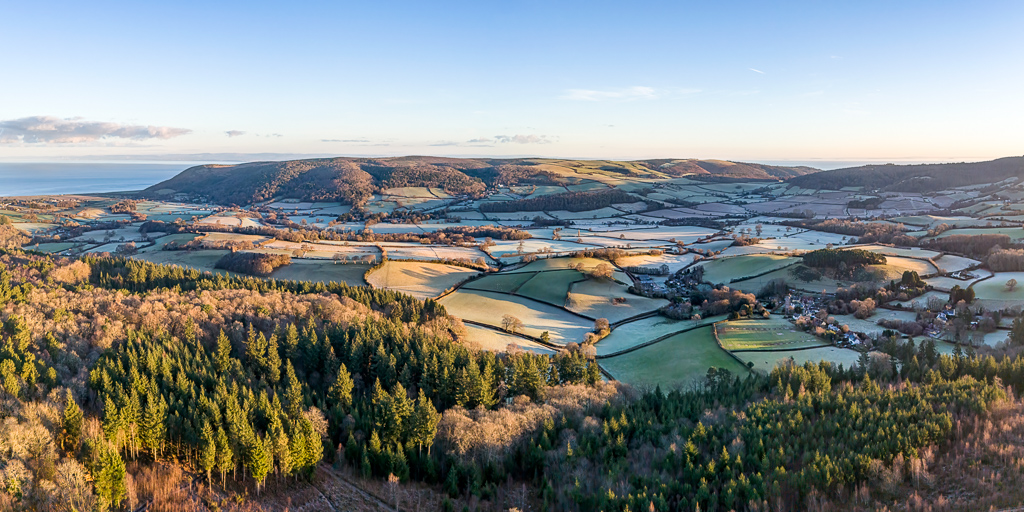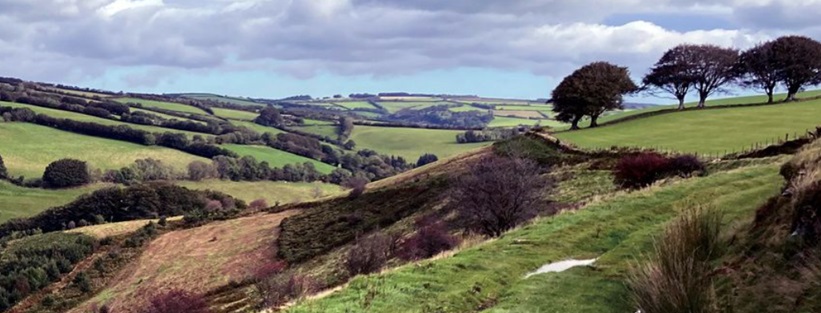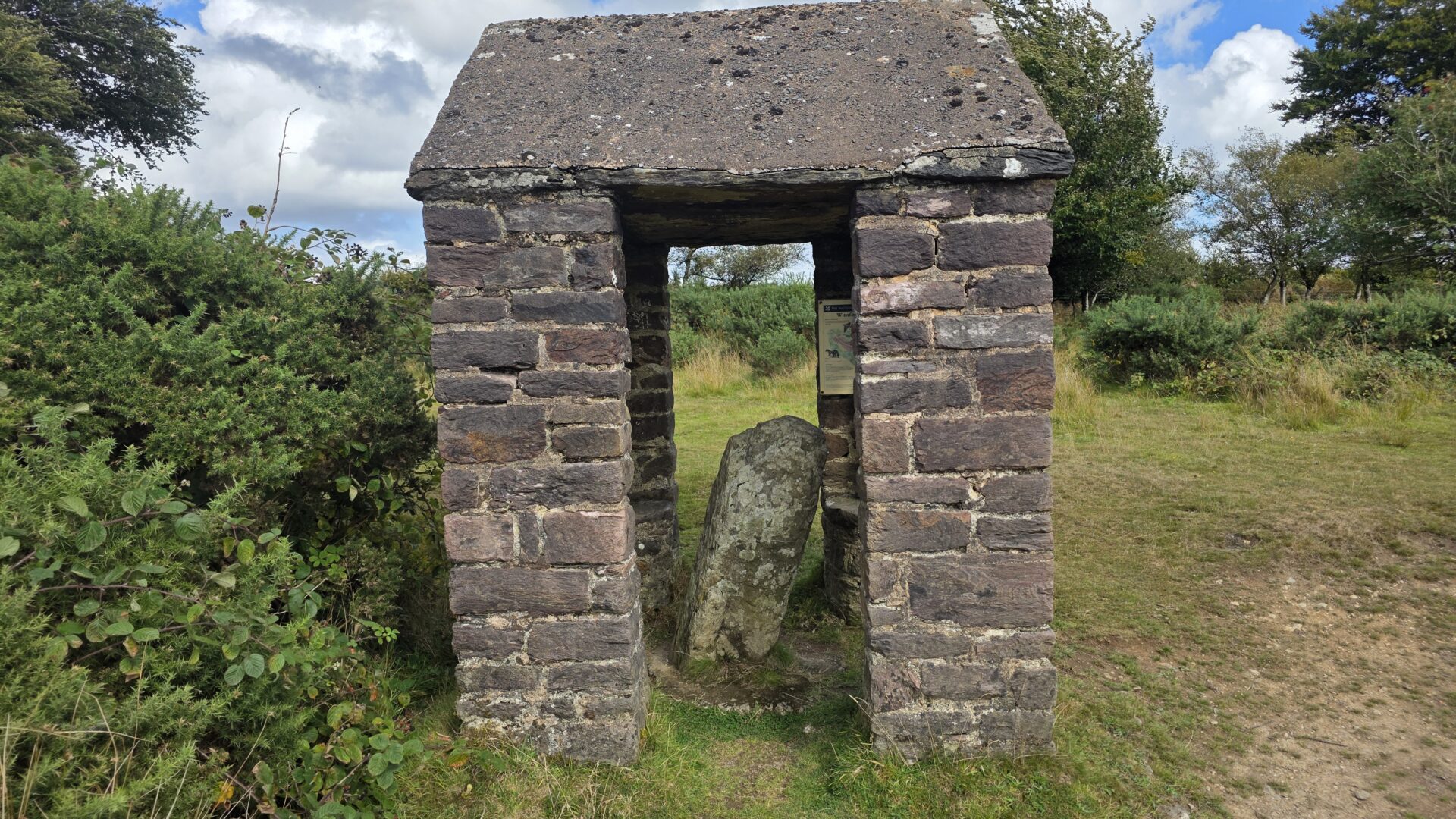
Discover: Stories of stone and silence – a family legacy on Exmoor
-
Date posted: 29/09/2025
-
Time to read: 4 mins
Proud ‘Exmoor lad’ Lee Baker walks us through landmarks left behind by his ancestors, offering a personal perspective on this beautiful landscape.
I am the County Council Member for Exmoor National Park Authority. I was born and bred in Wheddon Cross and my ancestors were from Exmoor. I am in my role to help ensure that Exmoor is delivering for people and nature – and is, in turn, loved and cherished by the nation.
For me, there are places on Exmoor that speak louder than words ever could.
For me, two such places are etched not only into the landscape but into my heart: Miss Alice’s Fountain on Cutcombe Hill and the Caractacus Stone Shelter at Spire Cross, Winsford Hill. These aren’t just landmarks – they’re family heirlooms, carved in stone by my ancestors. They mark the beginning of my lifelong love affair with Exmoor.
Miss Alice’s Fountain is more than a watering hole – it’s a story of compassion and craftsmanship. In the late 1800s, my great-great-grandfather, Thomas Baker, a stonemason from Withypool, was approached by Alice King, a blind woman living at Raleugh Manor in Wheddon Cross. She could hear the horses struggling up Cutcombe Hill – hooves clattering, breath heavy, loads burdensome – but she couldn’t see them. There was no place for them to rest or drink.
For ten shillings – about 50p today – Thomas carved a fountain into the rock, fed by a natural spring above the hill. It took him about a week. That simple act of kindness still stands today, and every time I pass it, I feel a surge of pride. Ironically, I was born and raised in Worzels, the former stable cottage of Ralegh Manor, where Alice once lived. It’s as if the story came full circle.

The Caractacus Stone Shelter is another family treasure. In the 1920s, my great-grandfather William Baker, also a stonemason, built the shelter around the ancient stone at Spire Cross for the Acland Estate. He added corner seats so visitors could rest and take in the sweeping views of Winsford Hill. I often sit there, imagining him placing each stone with care, shaping a space for reflection and peace.
I first discovered these places when I was about five years old, guided by my late grandfather Ken Baker, born in Winsford in 1907. He showed me these landmarks time and again, weaving stories of Exmoor into my childhood. Ken’s love for Exmoor was infectious, and he passed it on to me with every walk, every tale, every quiet moment on the moor.

I think about these places almost every day. I visit them whenever I can. They’re not just part of Exmoor’s history – they’re part of mine. The sound of silence there is unlike anything else. Even in summer, with traffic nearby, all I hear is the breeze and the whisper of the moor.
These discoveries didn’t change my life in dramatic ways – but they taught me to treasure every moment. They rooted me in a place and a story that stretches back generations. My grandfather Ken is even mentioned in Birdie Johnson’s book Reflections: Life Portraits of Exmoor, a collection of oral histories from the region – a fitting tribute to a man who helped shape my love for this land.
Exmoor isn’t just a National Park to me – it’s a living memory, a family album carved in stone. And every time I visit Miss Alice’s Fountain or sit by the Caractacus Stone, I’m reminded that discovery isn’t always about finding something new. Sometimes, it’s about rediscovering what’s always been there.

